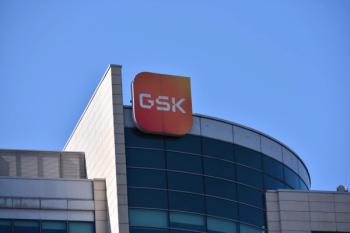
- BioPharm International-05-01-2013
- Volume 26
- Issue 5
Outsourcing's Modest Role as a Cost-Containment Strategy
Outsourcing is weighing in more as a tactic for cost-cutting, but it is still not the primary weapon.
Companies are outsourcing now more than ever before, but there are indications that these choices are based on strategic calculi rather than as an actual cost-cutting mechanism, although cost is slowly entering more into the decision to outsource. Part of BioPlan Associates' 10th Annual Report and Survey of Biopharmaceutical Manufacturers evaluated the ways in which companies are addressing cost issues in biopharmaceutical manufacturing (1).
Eric Langer
The study found that the most significant action taken in the past 12 months was the "implementation of programs to reduce operating costs," indicated by 69.2% of respondents, down from 80.7% in 2012 and 73.1% in 2011. Various other activities, such as negotiating harder with vendors to reduce costs, implementing lean manufacturing programs, and accepting single-use systems into clinical manufacturing operations, were undertaken by at least one-third of respondents. Outsourcing to reduce costs, however, was not a key priority (1). Of the 19 cost-cutting actions examined in the study, the five actions relating to outsourcing occupied the bottom spots in the survey results, an indication that when it comes time to tightening the reins, calling a CMO is not the first option. In fact, it is one of the last.
CHANGING FORTUNES
That tendency, however, might be slowly changing. During the past several years, the percentage of respondents indicating that they outsourced activities as a cost-cutting mechanism has grown. The 2013 survey showed the following (see Figure 1):
- 16.8% of respondents in 2013 outsourced jobs in manufacturing, up from 14.4% in 2012 and 11.8% in 2011.
- 14% outsourced manufacturing to domestic service providers, an increase from 9.4% in 2012 and 7.1% in 2011.
- 13.3% outsourced jobs in process development, on par with the 13.3% in 2012 and 13.2% in 2011.
- 12.6% outsourced manufacturing to nondomestic service providers (offshoring), up from 9.4% in 2012 and 5.7% in 2011.
- 11.2% outsourced jobs in R&D, up from 9% the past two years.
Figure 1: Percentage of respondents taking actions to reduce costs during the past 12 months, respectively in 2011, 2012, 2013. (FIGURE 1 IS COURTESY OF THE AUTHOR)
The relatively low priority assigned to outsourcing as a cost-cutting tool may reflect companies viewing these activities more as means to fill temporary gaps in capacity and as a way for biopharmaceutical companies to focus on their core competencies. Another explanation may be that although outsourcing is seen as a useful cost-reduction tool, it does not compare as favorably with other cost-cutting tactics. Biopharmaceutical companies are not alone in this result; in previous BioPlan surveys, few vendors approached cost containment by outsourcing.
The data from 2013, however, show that outsourcing is increasingly considered as a cost-cutting mechanism. This trend may be related to CMOs expanding their manufacturing competence through novel technologies, single-use/disposable bioreactors, and other differentiated bioprocessing services. These expansions result in increased adaptability, lower costs, faster turnaround, and higher yields. These trends create greater competition among CMOs and more choice for biopharmaceutical companies. Increased competition that results in downward pricing pressures among CMOs might lead clients to more heavily figure cost into the equation when making a decision about outsourcing. When bio/pharmaceutical companies were asked about crucial issues when considering outsourcing biomanufacturing to a CMO, 42% said that it was "very important" that the CMOs demonstrate the cost effectiveness of their services. That percentage is the highest level of response to this factor since 2007, when it was also cited by 42% of respondents. In 2012, only 29% of respondents cited this factor as such.
LOOKING AHEAD
As technological improvements allow, suppliers and manufacturers are shifting their focus to reducing costs. Almost three-quarters (73%) of respondents in the 2013 study said that due to the recent global economic situation, they had placed a "much greater" or "somewhat greater" focus on cost-cutting, up from 67% in 2012 and approximately 71% in 2011 and 2010.
Production-capacity constraints continue to shift, and these changes require manufacturers to scrutinize costs and technology. CMOs continue to offer valuable technical expertise and flexible capacity that supports biotherapeutic developers and reduces the total risks associated with building (or not) internal capacity.
Moreover, under extreme conditions, activities such as R&D, which were considered essential to retain in-house, may become options for outsourcing. Biopharmaceutical companies plan for the long term, and because R&D cycles and production build-outs are lengthy and risk-intensive, it is the additional benefits that outsourcing can bring to drug development and manufacture that often swing decisions.
For several years, BioPlan has seen that general budgets for in-house biopharmaceutical manufacturing have risen more quickly than budgets for outsourced manufacturing. This trend suggests that as budgets expand for other activities, biomanufacturers want to maintain their outsourcing spending levels, perhaps in an attempt to extract more value out of their relationships. Although outsourcing may not be a primary cost-cutting tool, it is subject to similar efficiency pressures.
In 2013, budgets for outsourced biomanufacturing are expected to rise by an estimated 1.7%, up from -0.4% in 2012, 0.8% in 2011, -1.2% in 2010, and -1.3% in 2009. It is interesting to see budgets rise at the same time as more biomanufacturers look to outsourcing as a cost-cutting mechanism. This trend may be an indication that clients will be outsourcing more activities this year, not only to benefit from the additional capabilities of today's sophisticated CMO, but also because they believe they will realize some cost savings from their decisions.
Eric Langer is president and managing partner of BioPlan Associates,
REFERENCE
1. BioPlan Associates, 10th Annual Report and Survey of Biopharmaceutical Manufacturing Capacity and Production (Rockville, MD, 2013),
Articles in this issue
over 12 years ago
Regulatory Convergence Sought for Global Pharma Marketover 12 years ago
Measuring Protein Mobility with Electrophoretic Light Scatteringover 12 years ago
Data and Systems Managementover 12 years ago
Report from Brazilover 12 years ago
The Future of Valves and Diaphragms Supplyover 12 years ago
Extractables and Leachables: Best Practices to Ensure Patient Safetyover 12 years ago
Facility Trends: Modularization and Single UseNewsletter
Stay at the forefront of biopharmaceutical innovation—subscribe to BioPharm International for expert insights on drug development, manufacturing, compliance, and more.





